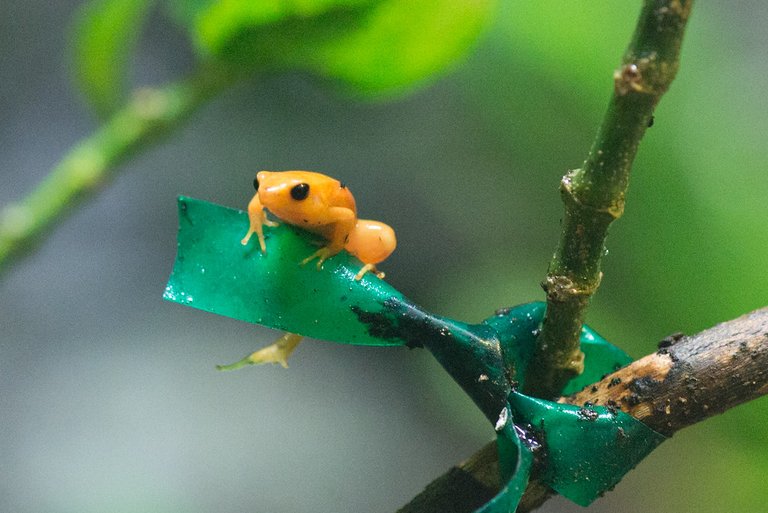I was out at night two days ago, and I saw a toad close to the water tap outside my house. From afar, I looked at it and admired how fast it moved. It wasn't walking rather it was hopping. This animal looks like this was what it was built for, and it did it with perfection. This got me thinking if there was possibly going to be a case of a particular species of toad that doesn't jump with perfection, and I came across one; the pumpkin toadlet.
This toad jumps but while in the air, it loses balance and its body turns causing it to fall on its back. In one word, this Brazilian toad is bad are jumping. If you ask why they are like that, then we will need to dig in a little because when you ask the question why in science, it comes with other little whys that would help make us reach the destination we are going.
When the question of why we do something comes out, we start by checking why we do it, how we do it, and if our history showed that we acquired it as we lived or if it was a part of us from evolution. Animal behavior would include its action, and this action while might sound awkward is done for a reason for instance, A panda rolling in poop might look gross but it does it to keep warmth, so when you ask a question regarding animal behavior, there are other smaller questions to be answered to get it right.
Back to our toad friend who is finding it hard to jump correctly. There can be two factors which will either be factors within or factors around. Toads in general jump for so many reasons with one of them being for safety. While it tries to be the best at what it does, there is a structure inside the ears of the toad which is usually filled with liquid and would normally slush around to keep the animal orientated, and this happens because the toad is so small that the fluid doesn't move fast enough with respect to time and this doesn't change at any time in their life.
Let's not forget that animal behavior can either be innate or acquired with innate being a part of their DNA while acquired being what they learned. Innate behavior will include babies having their hands closed tight as infants, reflexes in organisms such as sneezing that happens without thinking about how it happens but then innate behaviours can be shaped by evolution as well with most behaviors following natural selection.
The small body of a Brazilian toad is good for him to escape predator with long jumps, its inability to land properly is a disadvantage for its survival. This is an innate behavior but not all behaviors are innate. Some can be adaptive or acquired, and understanding them helps to know which each animals use to communicate, survive, interact, and hunt.
Reference
https://www.newscientist.com/article/2324600
https://phys.org/news/2022-06-tiny-brazilian-frogs-poor-jumpers.html
https://www.khanacademy.org/science/ap-biology/ecology-ap/responses
https://plato.stanford.edu/entries/innate-acquired/


This reminds me of the great debate: Nature vs Nurture.
Exactly.. Some things are learned and some things are genetics. Our ancestors learned new things so as to be able to adapt with their environment.
Thanks for your contribution to the STEMsocial community. Feel free to join us on discord to get to know the rest of us!
Please consider delegating to the @stemsocial account (85% of the curation rewards are returned).
You may also include @stemsocial as a beneficiary of the rewards of this post to get a stronger support.